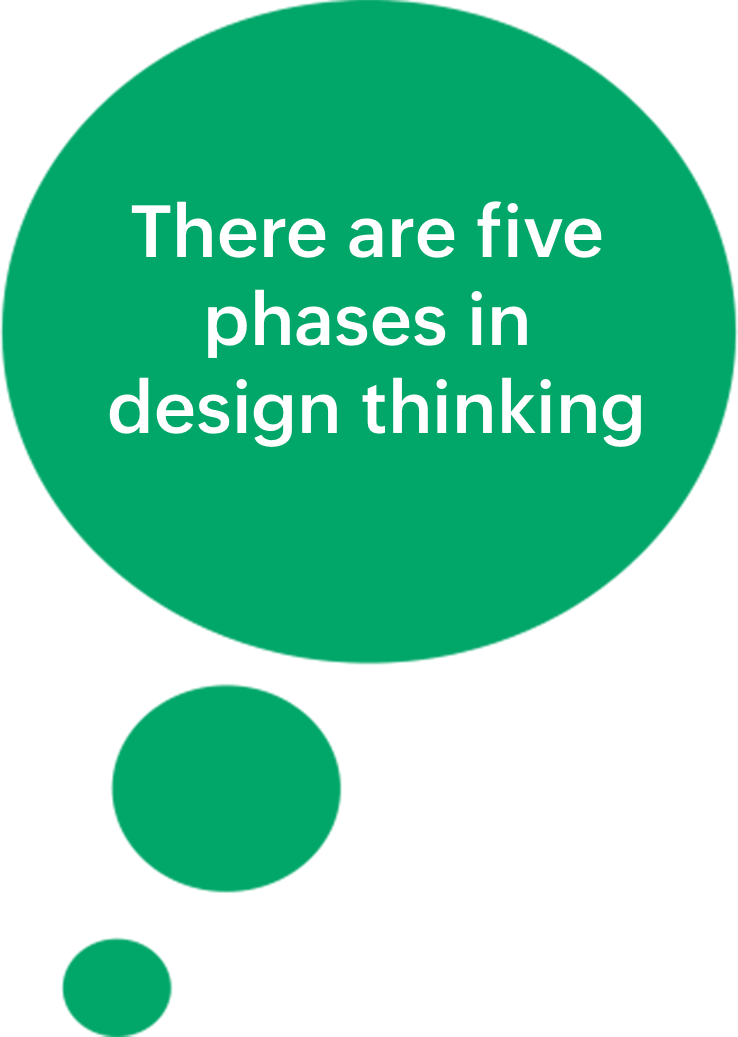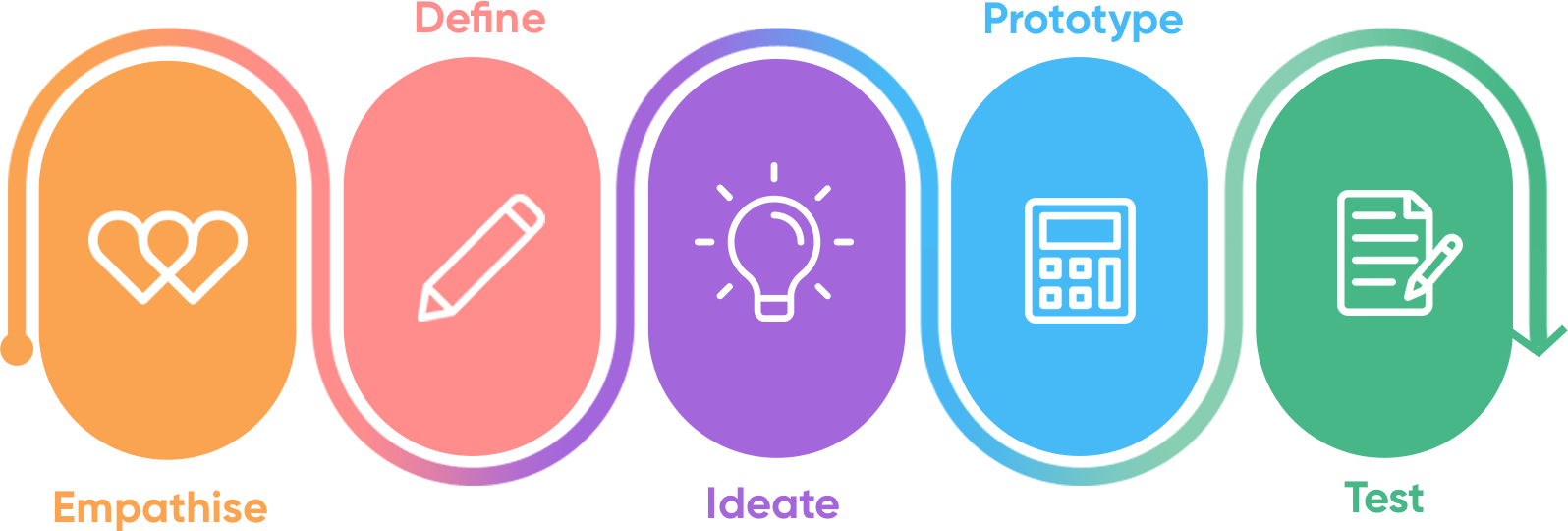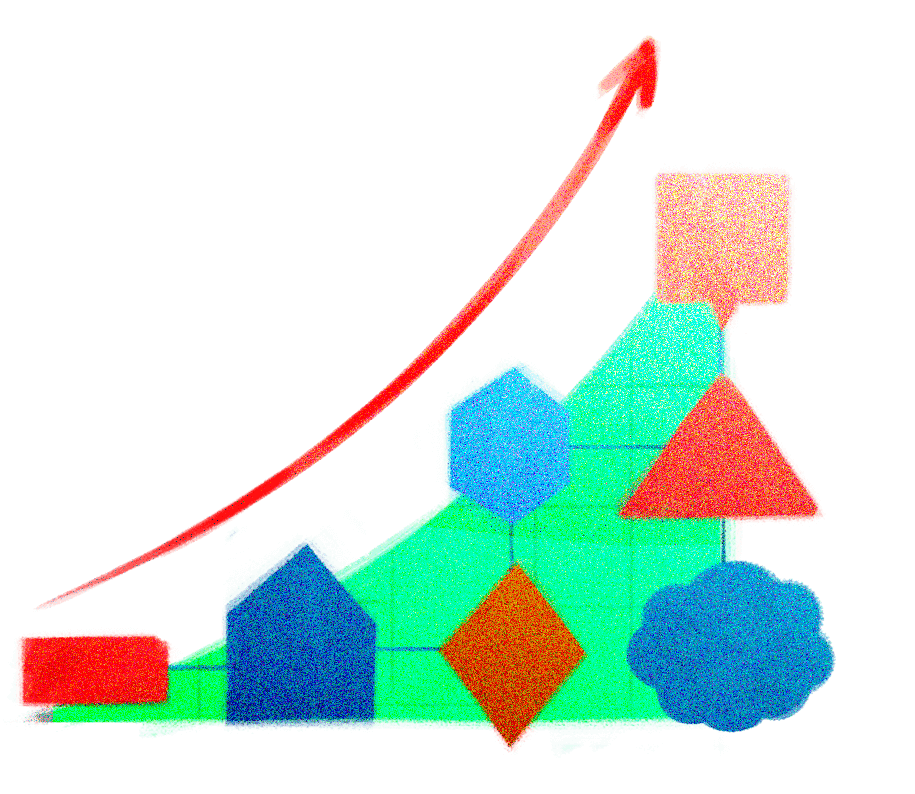What is design thinking?
Design thinking is both an ideology and a process for resolving complex issues. Initially used by designers, design thinking has been adopted by innovators from all industries as a formalized method for harnessing people's creative power to overcome tough obstacles. This approach fosters core ideas like empathizing with users, challenging assumptions, developing new ideas, and redefining existing problems. It's best suited to tackle problems that are abstract or ambiguous.

1. Empathize
Engage with and observe your target audience, and try to empathize with their experience. Understanding your users is the first step to solving their problems.
2. Define
Understand and isolate the pain points that you want to address. Define a single problem that you're aiming to solve with your product or service.
3. Ideate
Brainstorm all possible angles and solutions. Record any and all ideas. Don't overthink about the feasibility of an idea. This phase is more about quantity, so there are no bad ideas.
4. Prototype
Build a basic version of your chosen idea. This forces you to test-drive the solution and get it validated by beta users.
5. Test
Observe how users interact with your prototype and collect feedback.
It's important to note that these stages don't have to be sequential. They can occur at the same time or even multiple times throughout the overall process. This method is designed to be creative and flexible.

Agility and Design Thinking: They go hand in hand
When we go over the five phases of design thinking, it's easy to think that it's identical to the agile approach. Both stress the importance of the end user's perspective, prototyping, multiple iterations, and small feedback loops. However, the agile approach focuses primarily on building the best possible solution—the 'how' part. Design thinking is better suited to finding the right problem to solve, answering the 'why' part.
With one method for problem-finding and one for problem-solving, incorporating the best practices from both into a single workflow could greatly increase the efficiency of the solutions we deliver.
How can agility and design thinking work together?
Every team works differently, and many create their own workflow with practices borrowed from frameworks that have worked well for them in the past. The amount of design thinking you incorporate into your workflow can depend on the nature of your work or the teams you work with. However, here are some examples of how agility and design thinking can come together.

Design Thinking + Scrum
If your team is already practicing Scrum, transitioning to this approach should be fairly simple. The idea here is to incorporate Scrum for the prototyping and testing part of the design thinking process. Translate your results from the 'Ideate' stage into actionable work items for your backlog. Use your next sprint to build the prototype and get it through user testing.

At the end of the sprint review and retrospective, if you find that the product has failed to tackle the end user's problem effectively, you can take another shot at the design thinking phase. If all goes well, you can continue planning future sprints and refining the solution. Introducing design thinking between Scrum sprints acts like scheduling regular checkpoints in your process.
Design thinking + Lean startup + Agility

While this workflow appears more complicated, it combines three powerful approaches to problem-solving to get the best of each. Design thinking, lean startup, and agility have all created waves of their own in recent years, so learning how and when to take advantage of these methods can help you stay competitive in today's business world.
Design thinking emphasizes on understanding the user's pain points. Lean startup's strengths lie in validated learning—frequently testing hypotheses using customer experiments and making decisions based on objective metrics. Agility advocates repeatedly shipping software in small batches. Each of their principles strengthens their respective parts of the process.
Note: As the number of circles increase in a workflow, it's important to remember that they aren't linear and that, despite the different colors, ideally they should all be done by a single, cross-functional team.
Design thinking + Lean startup + Agility + Growth hacking

In this last workflow, we've added growth hacking to the concoction of tools at our disposal. Growth hacking is a relatively new field in marketing which focuses primarily on growing your business. It's largely popular among early-stage startups that need to expand using low-cost strategies.
By incorporating growth hacking, you can create a structure for ongoing feedback from all channels to help the product function, develop, and scale sustainably. A product needs to continue evolving long after it hits the market, which is why this integration could give your product a competitive advantage.
Too many workflows? Here's how to get started
The lean startup movement has been a game changer in the entrepreneurial world, just like how agility was to the software development world and design thinking was for product ideation and problem-solving. Some other methods are growth hacking, business development, and lean UX.
What all of these methods have in common is continuous innovation. They provide a framework for implementing this principle, no matter the industry or business department. It's important and helpful to remember this if you ever get overwhelmed by these complex charts and processes:

Start small.
Start by educating your team. Pick a framework and experiment with low-risk opportunities to see how your teams respond. Encourage cross-functionality. Initially, balancing design and delivery can be tough, but your teams will develop these skills over time. All of these frameworks are nonlinear, and their parts should not be executed by different teams.
When used effectively, these methods can help businesses of any size stay competitive and consistently reach their goals. Even choosing to try one out could generate new levels of innovation in your organization.
